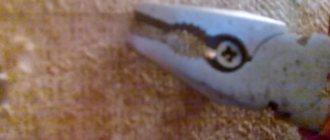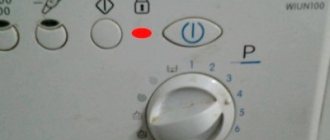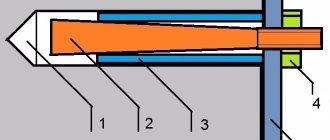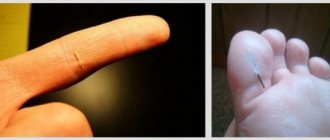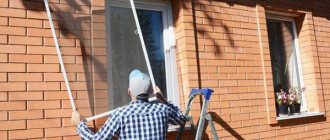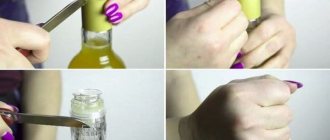Types of lock larvae
The cylinder is the core of the lock, consisting of a keyhole, several parallel code channels - springs with pins are inserted into them. Only at a certain position of each of them is the cylinder able to rotate and unlock the bolt. The notches and teeth on the key are responsible for lining up the pins in the desired position.
The larvae in modern locks are available in 2 types:
- double-sided - the core is unlocked with a key from both sides of the blade;
- one-way (with a turntable) - the door opens and closes from the inside without using a key (using a rotary handle).
Also, larvae are classified into 3 types according to the level of burglary resistance:
- Low - the pins allow for up to 10 thousand combinations, the pins are made of wear-resistant brass. Doors made in China are often equipped with such mechanisms.
- Medium - up to 50 thousand combinations are provided, but the material is still wearable and not durable.
- High - the number of combinations is over 100 thousand. The lock is made of high-quality materials - a brass body, hardened or magnetic pins. Protection against knocking out and drilling is provided.
Cylinder mechanisms are popular due to their ease of operation and maintenance. If the cylinder fails, there is no need to disassemble the entire lock and replace it with a new one - just remove the old core and install a working one.
Reasons for replacement
It is necessary to replace the locking mechanism cylinder if:
- The lock is worn out and it becomes difficult to unlock. The shelf life of cores from Turkish or Chinese manufacturers is 3-5 years, from European ones – up to 10 years.
- The mechanism is broken or damaged - for example, due to burglary attempts or careless use of the key.
- The lock on the premises was opened.
- The locking mechanism jams, and the key has to be “swinged” when inserted.
- Keys were lost or stolen or were used by strangers.
- The owners and tenants of the premises have changed.
- It was decided to change the lock to a more reliable model.
Attention! It is recommended to replace the cylinder at the first sign of a malfunction. Even small errors in operation can cause the door to lock. In this case, it is often necessary to take drastic measures - especially if children or incapacitated citizens remain locked in the premises.
When you shouldn't invent new autopsy methods
The given methods of how to knock out a lock are not always effective. In addition, as you can see from their descriptions, to use one or another method you need either special equipment or appropriate skills. Therefore, if none of them suits you, you should not come up with a new method, for example, cutting out the lock body with a grinder or injecting acid inside. It’s better to immediately invite specialized specialists who can handle the lock in a matter of minutes, no matter how reliable the mechanism you have.
To avoid problems with opening the lock if the keys are lost, you should keep a spare set, for example, with neighbors whom you trust. Or with relatives, even if they live on the other side of the city.
To ensure that the locking device does not break and functions for as long as possible, use it carefully, turn the key without haste, and do not slam the door, because vibration can also negatively affect the efficiency of the internal parts of the product. In addition, the lock should be lubricated periodically. Such prevention will undoubtedly have a positive effect on the efficiency and durability of the locking mechanism.
Replacing the working larva
Before replacing the core, you need to buy a new larva - it must be the same size as the old one. It is recommended to purchase the item from the same brand. If you buy at random, there is a high probability that the cylinder will not fit.
Step-by-step instruction:
- Remove the armor plate from the door and unlock the lock with the key.
- Remove the screw from the end of the door and remove the plate.
- Insert the key into the hole and turn in the closing direction to release the bolts.
- Remove the screw in the center of the mechanism.
- Pull out and install a new larva - to fix it, carry out the steps in the reverse order.
Check the success of the manipulations with the door open to avoid blocking. The movement of the new core should be smooth, without extraneous vibrations or rattles.
Is it possible to change
Replacement is provided for any cylinder type locks. This is the type where the lock body is hidden in the door. You can tell that the core can be removed by looking at the fastening screw. It is located under the locking tabs. Most often, the screw has a cross-shaped shape, and less often - flat.
Castle SHO-25 Source krepost-zamok.com.ua
It is also possible to replace the core with parts of rim locks. This is the type where the body is attached to the door. Such models include the SHO-25, which was very popular in the nineties. Although most often this can only be done with the lock itself. To accurately determine the possibility of carrying out the procedure, you will need to completely remove the mechanism from the door.
The easiest way to determine the possibility of replacement is by the key. If it is flat or cross-shaped with texture, then the procedure can be performed. But if it is a stick with blades, then replacement is impossible.
If the model does not imply the ability to remove the core, then the only way to correct the problem is to purchase a new mechanism assembly. In this case, it is better to purchase a type of lock that will have a replaceable cylinder.
See also: Catalog of companies that specialize in the installation of doors and windows
Replacing a damaged larva
The method of replacing a faulty core depends on the type of failure and the required urgency of action:
- The key cannot be inserted, it jams, it turns - initially it is recommended to clean the mechanism and lubricate it with special products (machine oil, grease, universal WD-40). If the action does not help, replace the larva using the method of drilling through a hole. The method will help to completely preserve the structure.
- The key broke in the lock, debris or foreign objects got into the hole, and they cannot be removed - replacing the core is also carried out by drilling, but the drill is not placed in the hole, but in the narrow part of the cylinder.
- The lock is locked and cannot be opened. If you need to quickly unlock the door, knocking or breaking is used. But later the lock will have to be completely changed.
- There is no key to unlock the door - you can try to open the door with master keys, this is a more gentle way. It is better to replace the larva by drilling it out.
Types of locking mechanisms
- The cylindrical one is the most popular, because not everyone can hack it. If you don’t know how to do this, it’s better not to disassemble it, so as not to do additional unnecessary work.
- Pin type - this type is rare, since the English mechanism is not reliable.
- Disc - most often it will not be possible to replace only the cylinder, since it is difficult to find a suitable replacement.
- Cross-shaped - it is also worth replacing the entire structure; this type is famous for its unreliability.
- Particularly complex - this includes mechanisms that are resistant to hacking, but you should not replace them yourself, and most likely this will not work.
Knockout
The method requires force on the mechanism - you will need a chisel and a hammer.
Place the chisel against the cylinder, then hit it vigorously with a hammer. Cheap locks are easily susceptible to this type of attack. Upon impact, the pins will bend the body of the device and the core will fall out from the back of the door. After this, you need to pry off the internal mechanism with a screwdriver and move the crossbars. The lock will open.
You should act carefully, since careless and excessive force can lead to damage not only to the locking mechanism, but also to the door leaf. The method is suitable for locks of burglary resistance classes 1 and 2; high-quality locks are protected from being knocked out.
It will not be possible to keep the larva in good condition using this method.
Bumper key or master key
The most gentle way to open a locked door is to use master keys, but the method is labor-intensive and requires certain skills and experience. You will need 2 wires - one straight to rotate the cylinder, the second with a curved end, which you need to tap on the pins. The goal is to build the right combination, then the lock will open.
An easier hacking method is to use a bump key. Its profile matches the original one and has a specific cutting of the heights of the secrets, which makes it possible to open the lock. After placing the key in the hole, it is struck (with a mallet, a screwdriver), the impact is transmitted to the support pins, pressed against the code springs. They repel and a space is formed between the pairs for a split second. The code pins remain in the core, and the support pins fly off into the body. At this time, you need to turn the key towards opening.
Attention! Opening the lock using the above methods is only permissible for the owner of the premises, his authorized representative or representatives of authorized departments. According to paragraph 1 of Art. 139 of the Criminal Code of the Russian Federation, criminal entry into someone else’s area is criminally punishable.
Briefly about the main thing
Losing the key to the front door is an unpleasant situation that requires certain skills to be able to enter the apartment. The simplest door lock can be easily opened using a standard master key, a wire from a paper clip or hairpin, or using a metal plate simulating a key. If this technique does not help and the cylinder does not turn, you should use a screwdriver to mechanically press out the tongue blocking the door.
If the cylinder is completely blocked, it is permissible to resort to rough mechanical intervention by drilling, knocking out or cutting out the lock. After such procedures, as a rule, an expensive restoration or replacement of the door is required.
Calling a specialist from the emergency service
If you need to quickly open a lock without a key, it is advisable to contact specialized organizations for opening, repairing and installing locks. Masters of such services mainly work around the clock and arrive at the scene of an incident from 20 minutes to 1 hour.
The advantage of contacting the special services is the ability to delicately remove the cylinder and install a new one without damaging the lock, handle, or door leaf. The master already has samples of locking mechanisms with him, and he himself will choose the appropriate one.
As a last resort, you can contact the police or the Ministry of Emergency Situations, but then you cannot count on a delicate approach.
The key is in the lock, but it doesn't work
A key that is stuck or broken off in the hole makes it difficult to break into the lock and replace the cylinder. If part of it protrudes from the cylinder, you can use lubricant to remove it. Inject the product into the well and leave for 20-30 minutes. Next, grab the key or fragment with pliers, slightly loosen it and try to pull it out.
The method works if the broken part can be clamped with a tool. It will also help if the key has not yet turned in the hole. In other cases, you will need to open the mechanism along with the key and replace the lock or cylinder with a new one.
Possible errors and unexpected situations
If the lock is replaced on the front door of a private house, then one problem may arise. The fact is that due to environmental influences, the mounting screw becomes corroded, making it almost impossible to tighten it. The only way out of this situation is to break out the larva. To do this, you need to remove the armor plate, grab the protruding edge of the cylinder with pliers or a wrench, and turn it sharply with force. Most often, due to the impact of physical force, the narrow neck breaks or cracks, which allows the core to be pulled out.
The tongue is jammed
The reasons why the tongue inside the lock jams are:
- latch deformation,
- breakdown of spring mechanisms - especially typical for English-type devices;
- violation of the seats of the spring or other elements inside the housing;
- If the tongue is broken (due to impact or slamming) - you will need to disassemble the lock to remove parts.
You can try to solve the problem using a flat and hard object - a plastic card, an aluminum ruler, a knife blade. It must be carefully placed in the gap between the door leaf and the frame and pulled back. This will provide access to the tongue - you need to hook it and press it into the lock, then the door will unlock.
You can also saw the tongue, but this method is labor-intensive and will not work if there is a small gap between the frame and the blade.
If the problem is related to the skewed door leaf, force will be required to align it. You will need a tool that acts as a lever - a screwdriver, a chisel, a wedge. The object must be driven into the problem area, installing the door in its original place. At the same time pull it by the handle to open it.
Prevention of breakdowns
Preventative measures that prevent the occurrence of malfunctions and guarantee the longevity of the lock include:
- Carrying out maintenance measures - cleaning the lock from dust, dirt, and lubricating it if necessary.
- Regularly planned replacement of the cylinder - after the expiration date stated by the manufacturer, or at the first errors in operation.
- Correct operation of the lock - for example, you can turn the key only when it is completely placed in the hole.
- Do not allow the door leaf to skew, straighten it immediately - even if the locking mechanism is still functioning normally.
- Do not use keys of poor quality, scratched or broken.
- Open the door by the handle, do not pull the key.
- Avoid force (slamming doors, hitting).
The cylinder mechanism is easily repairable and in most cases does not require a complete replacement of the lock. If you have a key, you can install a new cylinder in a few minutes, but it is important that it matches the size of the old one. If the door is locked, drilling will help preserve the lock. If you need to urgently solve a problem, it is recommended to seek help from professionals.



